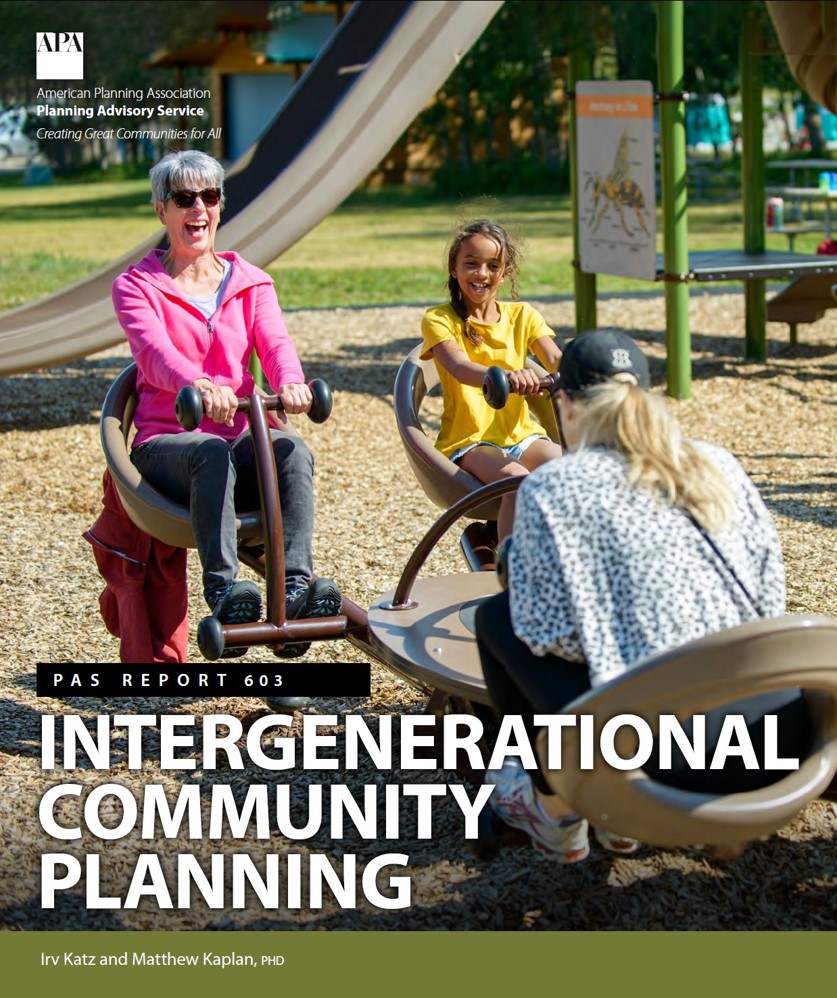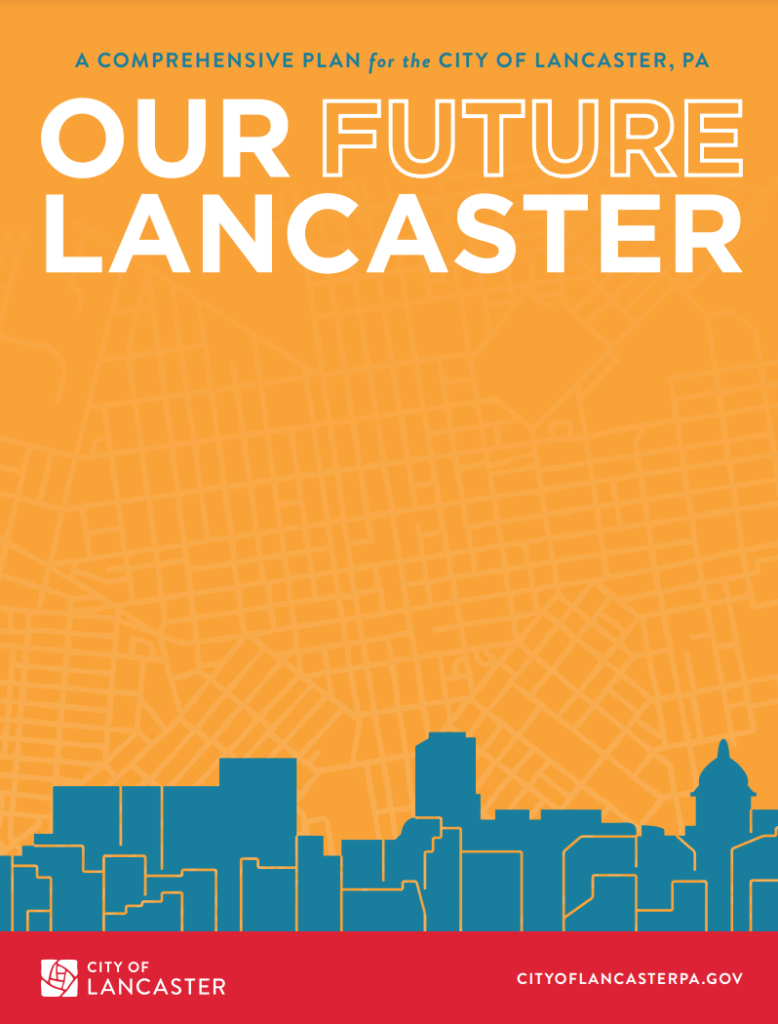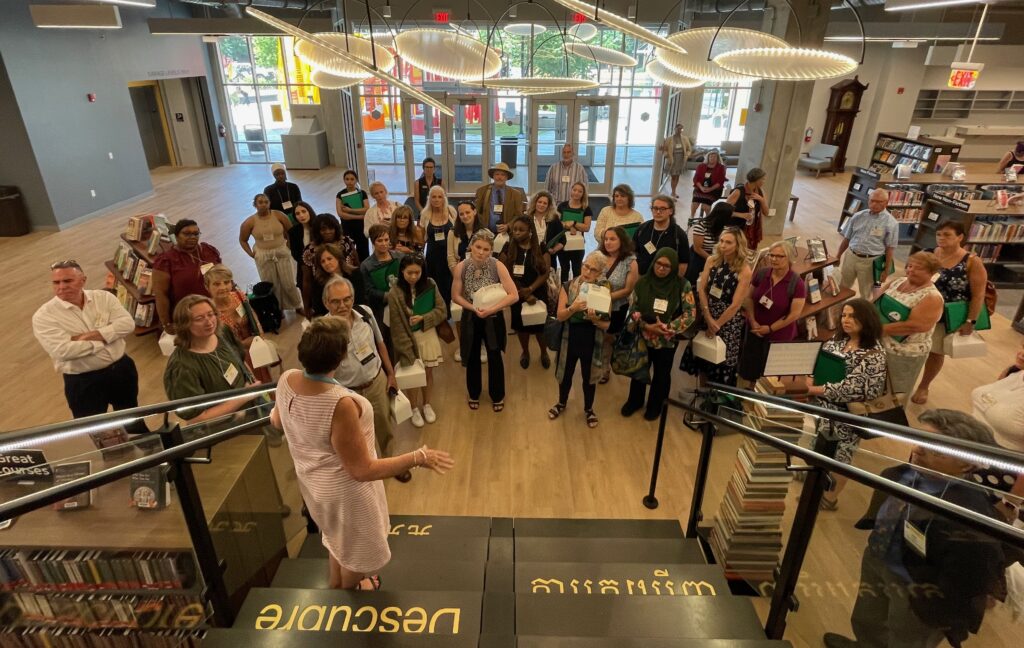Last month I celebrated my 73rd birthday. Like many members of the baby boom generation, I’ve always liked to believe that I’m younger than I am, but as I’ve grown older I’ve learned to accept aging as the natural progression in life. I’ve also come to understand the importance of embracing all generations in the communities we plan and the spaces we design for people – something that has not always (or even typically) happened in practice.
We all know that the nation’s population is aging. The median age of the US population increased from 30.2 years in 1950 to 38.3 years in 2020, an average annual increase of 1.74%. Looking towards the future, the US Census Bureau projects that, by 2034, older adults will outnumber children under the age of 18 for the first time in the nation’s history. By 2060, nearly one in four Americans will be 65 years and older, the number of Americans 85 and older will triple, and the nation will add a half million centenarians (Vespa 2019). We are, in short, transitioning from a youth-dependent to an age-dependent population.
We’ve also heard about the negative consequences of an aging population: spiraling healthcare costs, underfunded pension systems, and fewer younger workers supporting more retirees, to name a few major ones. These consequences are encapsulated in the ageist term “silver tsunami.” But what if we were to view an aging population not as a negative, but as an opportunity to engage older adults, their experience, and their resources in creating communities that work better for people of all ages? This is where intergenerational community placemaking comes in.

Intergenerational Community Planning, a Planning Advisory Service (PAS) Report published by the American Planning Association, defines an “intergenerational community or site” as one “that not only meets the needs and interests of multiple age groups but provides space and opportunity for them to engage one another, whether through recreation, education, or community planning and exploration activities” (Katz and Kaplan 2022). Building on this definition, intergenerational community placemaking creates settings that provide opportunities for people of all ages to connect with each other, at scales ranging from individual buildings or sites to neighborhoods, community, and beyond.
Intergenerational community placemaking should be reflected in the design of physical spaces to be inclusive, welcoming, and to create opportunities for spontaneous interaction between people of different ages. It should also be reflected in programs and activities that intentionally bring people of different generations together, including through engagement in planning and design processes. The PAS report emphasizes interactions between people 18 and younger and 65 and older in age, along with their adult caregivers. Children and older adults (particularly people of color) are the two age groups most impacted by poverty, food insecurity, natural disasters, and the like, underscoring the equity dimensions of an intergenerational approach.
Despite its benefits, intergenerational community placemaking is the exception rather than the rule in planning and design practice. To test this hypothesis, I recently asked ChatGPT to identify references to “intergenerational” in community comprehensive plans. In response, it cited eight “common themes and approaches” contained in comprehensive plans, such as age-friendly infrastructure, intergenerational programs (the only one that directly mentions the term), inclusive housing, and social services. I then asked ChatGPT to identify specific plans that use the term “intergenerational.” Replying “Certainly!”, it cited six large-city comprehensive plans. Delving further into these plans, however, I found only one – Minneapolis 2040 – that actually referenced intergenerational in its policies, specifically through action steps mentioning “intergenerational mentoring” and “intergenerational engagement.” The remainder contained policies related to the eight themes and supporting commentary from ChatGPT’s initial response, which (in fairness) support an intergenerational approach but do not explicitly propose one. Aside from revealing the limitations of ChatGPT as a research tool, this experience confirmed my initial hypothesis – at least as it applies to comprehensive planning practice.

Our Future Lancaster, the comprehensive plan for the City of Lancaster, PA, is an exception to the above rule. In December 2021, the city completed an Age-Friendly Action Plan that identified priorities for incorporation into a new comprehensive plan, which was then under development. Led by Chris Kennedy of Age2Age Consulting, Lancaster’s Age-Friendly Advisory Committee played an active role in the comprehensive planning process. Adopted in October 2023, Our Future Lancaster notes that “Lancaster viewed the age-friendly planning process as an opportunity to bring people of all ages together to make our neighborhoods more responsive to the needs of every generation…Cross-cutting intergenerational perspectives were included in each of the eleven policy area study sessions. Applying this lens…ensures that our community will be a good place for everyone throughout their lives.” Policy and action examples include development of age-friendly/intergenerational housing, Vision Zero traffic safety improvements, and an accessible, intergenerational parks system.
I recently had the pleasure of participating in a symposium on intergenerational community planning and placemaking, which was part of the Biennial Mid-Atlantic Intergenerational Conference held in downtown Lancaster. I was struck by the passion, diversity, and breadth of experience of my fellow conference attendees and speakers. To cite a few examples, Matt Kaplan (professor and Intergenerational Studies and Aging at Penn State University and co-author of the Intergenerational Community Planning PAS Report) spoke on the characteristics of intergenerational public spaces. These include, among others, creating focal points for intergenerational interactions; ensuring equitable access and usage across generations; and providing opportunities for users of different ages to provide meaningful input into design, development, and evaluation. Steve Lindsey and Scott Miller (CEO and Chief Marketing Officer, respectively, of Garden Spot Communities in Lancaster County) spoke on intergenerational programs and initiatives in an active lifestyle retirement village. Nancy Henkin (founder of the Intergenerational Center at Temple University and Senior Fellow at Generations United) spoke on the evolution of intergenerational programs and practices over the last 50 years. I came away from the conference thinking that planners and designers have much to learn from kindred spirits in the intergenerational movement – and vice versa.

Intergenerational Community Planning and Placemaking Symposium, Lancaster Public Library
So how can intergenerational placemaking become more of an explicit focus of community planning and design? I have two simple recommendations. First, as was done for Our Future Lancaster, incorporate an intergenerational lens into all activities, from community visioning and goal setting through plan/design development to implementation. The Intergenerational Community Planning PAS Report identifies key elements of an intergenerational community planning process, such as making the case for intergenerational planning, engaging young and old in the process, and analyzing age-specific community conditions and resources. Second, break down silos and promote collaboration across disciplines. For example, architects, landscape architects, and civil engineers design the physical environment while professionals working in fields such as social services, public health, and parks and recreation develop and manage programs that can bring generations together in using the buildings and places they design. Planners are well-positioned to connect these different professions through the common goal of creating intergenerational communities.
In contrast to the value placed on intergenerational relationships and the extended family in traditional cultures, present-day society tends to isolate and segregate age groups outside the conventional nuclear family. Children and older adults, in particular, often find themselves marginalized by contemporary societal structures. The non-profit organization 8 80 Cities advocates the “simple but powerful idea that if everything we do in our cities is great for an 8-year old and an 80-year old, then it will be better for all people.” Intergenerational community placemaking goes one step further: bringing people together across generations is essential to improving community health, happiness, and wellbeing.
References
Katz, Irv and Matthew Kaplan (2022). Intergenerational Community Planning. American Planning Association: Planning Advisory Service Report 603.
City of Lancaster, PA (2021). Age-Friendly Action Plan.
City of Lancaster, PA (2023). Our Future Lancaster.
Vespa, Jonathan, United States Census Bureau (revised 2019). The Graying of America: More Older Adults than Kids by 2035.
